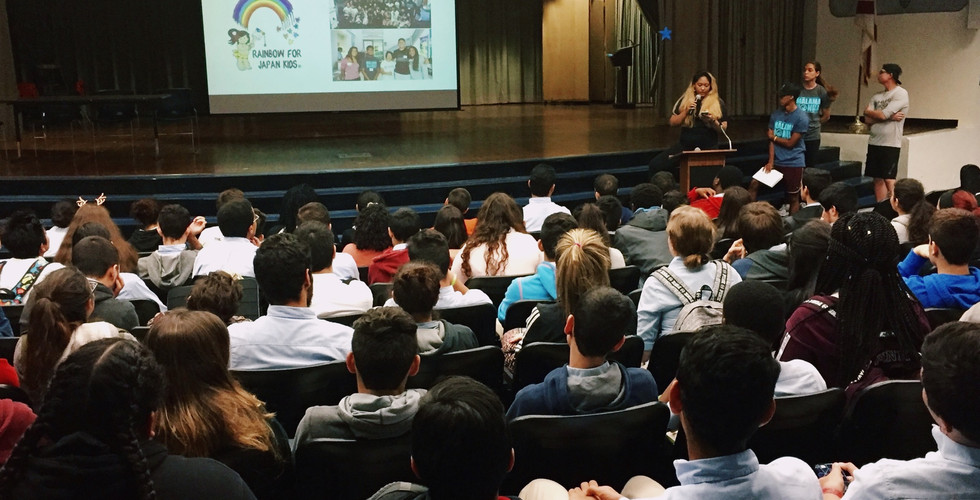Miami Trip - Day 2
- Baylee Jackson
- Dec 16, 2016
- 3 min read
The morning started early with us preparing for the presentations we were doing at the José Martí Mast Academy today. We got to the school at 9 am and met up with Mr. Kearns, a botany and statistics teacher, and he gave us a tour of the campus. The botany lab had one of the Fairchild NASA grow bins that we saw yesterday. The botany students were growing a variety of tomatoes and two varieties of peppers in the grow bin. They also were growing Cowhorn orchids, a critically endangered native species with less than 30 individuals left in the world. Fairchild had trouble growing this species themselves but the botany students at Mast Academy found a way to raise this rare orchid with a high success rate. Fairchild turned over the production of Cowhorn orchids to the botany students. The students were conducting experiments on the use of different light sources to grow the orchids. One student was studying a species of beetle to determine if it is an invasive species and what effects it could have on nearby agriculture.
After learning about the amazing things that Mast Academy does it was our turn to share what we, Nā Kelamoku, do. We gave a presentation to high school and middle school students and shared the message of Mālama Honua with them. We also answered all of the questions they had about Hawaiʻi, the waʻa, and sustainability. It was incredible to see the interest that we sparked in the students and hopefully we helped to inspire them to make a difference in their own community.
Then we went to the University of Miami Rosenstiel School of Marine and Atmospheric Science and met up with Dr. Chris Langdon. He took us up to the marine laboratories to show us the research he has been conducting on various species of coral and the effects that pH and temperature of the water has on these corals. Dr. Langdon explained to us that the oceans are changing due to global warming and the pH and temperature of the water are key factors that determine the survival of corals. A special laser and camera was used to record the growth rate of each coral. He found that certain genotypes are more resilient to the changes in the ocean’s pH and temperature. The data Dr. Langdon is collecting will be crucial to the survival of Florida’s reefs as the conditions of the oceans change in the future.
We met up with Dalton Hesley, the program manager of Rescue a Reef, which aims to save the reefs around Florida by doing coral out-planting. He showed us around the coral restoration lab which focused on regrowing corals that are used for coral out-planting. The lab focused on growing Staghorn coral because this type of coral can reproduce asexually and grows fast compared to other corals. “Coral trees” are constructed with pvc pipes and pieces of Staghorn coral are tied to the branches of the tree. Once the corals have grown larger, branches of them are cut off and attached to bare parts of the reef with a nail and zip-tie. Over 8000 Staghorn corals have been out-planted by Rescue a Reef to date. Volunteers do most of the plantings and it is easy to get involved if you are interested in helping out with the project. Just visit the Rescue a Reef website here.
The day ended with us meeting up with the Hōkūleʻa crew for dinner. We discussed our day with them and shared all we had learned. After dinner we headed back to the hotel to sleep for our next day of adventure.



































Comments